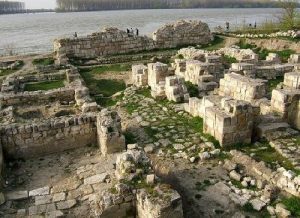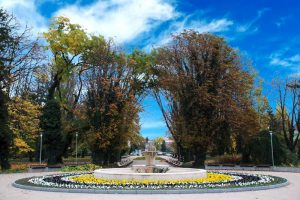

The Roman Tomb of Silistra is one of the most well-known ancient monuments in Bulgaria. It dates back to the 4th century when the city was a Roman City called Durostorum. The stone tomb features a single burial chamber with east entrance measuring 3.30 by 2.60 by 2.30 metres. It is well-known for its rich mural paintings (geometric figures, animals and human faces, hunting scenes, families and their servants) probably painted by an Egyptian or Syrian artist.
Silistra tomb is one of the most famous monuments of the antique civilisation. Hundreds of articles, monographies and studies were dedicated to this monument both in Bulgaria and abroad. It was accidentally discovered in 1942 in the southern part of the city where the antique Durostorum city – one of the most important cities in the lower Danube region from the 2nd to the 4th century – is being preserved.
Since 106 until the 6th century AD it was a military base without interruption – the most important military base of the roman empire in the Lower Danube – 11th Legion Claudius. Durostorum was an important fortress against the barbarian’s invasions (especially gothic). In the 6th century the city was very prosperous. The proof of this prosperity are the impressive city bathrooms, the pagan temples and altars, the villas from the city and surrounding areas found here.
The Roman Tomb is a part of the architectural patrimony. Inside the tomb there is a frieze with 11 rectangular panels covered with red brick placed on a white pedestal. The mural paintings suggest that this is the tomb of a noble roman. His public position is proved and displayed by the diploma awarded by the emperor. Probably at the middle of the 4th century he was honoured as other nobles from the province, with a title (patrician, magister, senator, consul). His clothes also indicate the same thing. Those are identical with the ones of the patricians, the senators and the highest magisters from the early byzantine age. The belt and the red robe suggest he belonged to the supreme military noble’s’ category.






